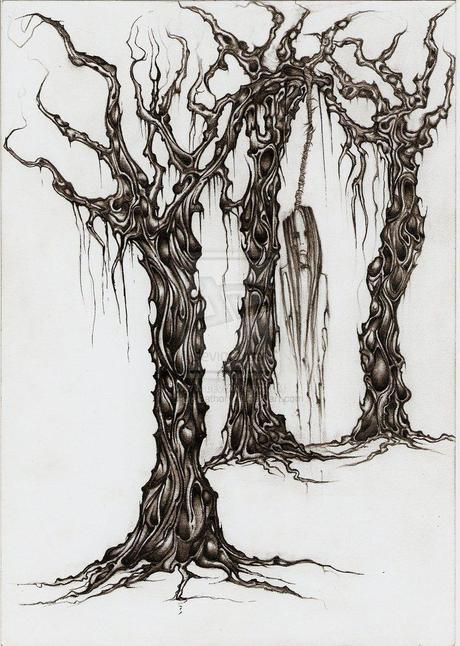
© D. Bathory
I’ve just spent the last week at beautiful Linnaeus Estate on the northern NSW coast for my third Australian Centre for Ecological Analysis and Synthesis (ACEAS) (see previous post about my last ACEAS workshop).
This workshop is a little different to my last one, and I’m merely a participant (not the organiser) this time. Alan Cooper and members of his Australian Centre for Ancient DNA (Jeremy Austin, Vicki Thomson & Julien Soubrier) combined forces this week with Craig Mortiz, Margaret Byrne, Steve Donnellan, Tania Laity, Leo Joseph, Xander Xue and Gabriele Cybis. Our task was to examine the mounting evidence that many Australian species appear to show a rather shallow genetic pool from a (or several) major past bottlenecks.
What’s a ‘bottleneck’? In reference to the form after which it was named, a genetic bottleneck is the genetic diversity aftermath after a population declines to a small size and then later expands. The history of this reduction and subsequent expansion is written in the DNA, because inevitably gene ‘types’ are lost as most individuals shuffle off this mortal coil. In a way, it’s like losing a large population of people who all speak different languages – inevitably, you’d lose entire languages and the recovering population would grow out of a reduced ‘pool’ of languages, resulting in fewer overall surviving languages.
Our workshop focus started, as many scientific endeavours do, rather serendipitously. Several years ago, Jeremy Austin noticed that devils who had died out on the mainland several thousand years ago had a very low genetic diversity, as do modern-day devils surviving in Tasmania. He thought it was odd because they should have had more on the mainland given that was their principal distribution prior to Europeans arriving. He mentioned this in passing to Steve Donnellan one day and Steve announced that he had seem the same pattern in echidnas. Now, echidnas cover most of Australia’s surface, so that was equally odd. Then they decided to look at another widespread species – tiger snakes, emus, etc. – and found in many of them, the same patterns were there.
How could such widespread, non-threatened and apparently healthy populations all (or at least, mostly) have such low genetic diversity? Answer: something big and bad happened in the relatively recent history of Australia.
What could that big, bad event be? A likely candidate is the last glacial maximum (LGM) between 28 and 15 thousand years ago (i.e., the ‘Ice Age’) when Australia became a dry, cold place (but with very little ice – this is not the Northern Hemisphere). Temperatures dropped by about 10 degrees C on average, and this dry country became substantially drier. Many things would have likely perished.
Of course, it’s more complicated than just this, but there seems to be a general pattern that during (and perhaps before) the LGM, many now-widespread Australian species retracted to very small population ‘refugia’, and then subsequently respread to occupy their former distributions. We’re currently working out WHO showed this pattern, WHEN it likely happened (based on how so-called ‘molecular clocks’ that tell us how far back in time lineages were lost) and WHERE the refugia were.
One pattern that seems to have some evidence is that south-west Western Australia was a site of many refugia. We’re currently trying to get our heads around why.
The reason this work is so important is that it demonstrates that even our widespread, apparently ‘healthy’ species might actually be in a lot more trouble than anyone has previously thought. We currently rush to save the rare and declining species, but what do we do about the widespread, but genetically depauperate ones? I don’t think Australians would swallow threat-listing emus, echidnas and tiger snakes, but we might have to consider how to legislate their poor conservation status from the genetic perspective.
Before I leave this unfinished business, I want again to extol the virtues of the venue itself. I’ve blogged before about Linnaeus Estate, but every time I come here I become more impressed. In a nutshell, Linnaeus is a group of long-term thinkers how want to save a beautiful, highly biodiverse section of coastline from the urban devastation to the north (Gold Coast) and south (everything from Sydney to Grafton). They do this by applying conservation convenants to land that must be held within families (intergenerational covenants) for at least 150 years. With the ugly sprawl of the east coast claiming more and more native habitats each year, we really need more like-minded endeavours.
Well done, Linnaeus Estate trustees, and thanks for hosting us during a terrific week of well-pampered science!
CJA Bradshaw
-34.917731 138.603034
